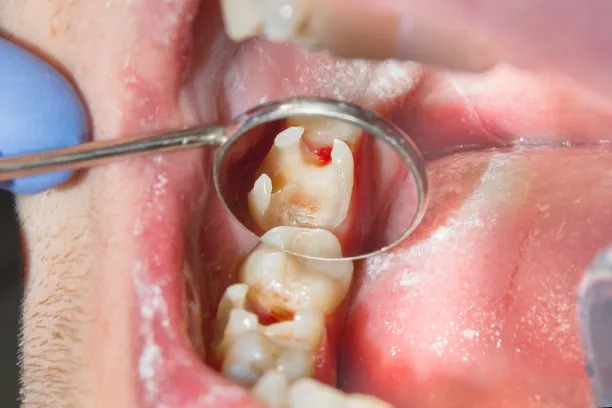Essential Guidelines for Ensuring Optimal Results and Care After Dental Filling Procedures
Summary: After receiving a dental filling, proper aftercare is essential for ensuring the longevity and effectiveness of the treatment. This article provides essential guidelines that emphasize the importance of understanding the process, following post-treatment care instructions, managing dietary choices, and recognizing signs of complications. By adhering to these guidelines, patients can optimize their dental health, reduce discomfort, and ensure lasting results from their dental fillings. Each section will delve into practical measures to enhance recovery and maintain overall dental hygiene, underscoring the essential role of patient responsibility in oral care.
1. Understanding Dental Fillings and Their Purpose

Dental fillings serve to restore the structure and function of a tooth affected by decay or damage. Understanding what a filling entails can help patients appreciate the importance of the material used and the process involved. Common filling materials include amalgam, composite resin, porcelain, and gold. Each has its unique characteristics relating to durability and esthetics, influencing a patients choice based on their needs and preferences.
After a filling, it is crucial to understand how it fits into your overall dental health regimen. Fillings are often the last step in a process that may include dental cleanings and examinations. Maintaining good hygiene practices post-procedure ensures that the filling integrates well with the tooth and helps prevent additional decay.
Patients should also be informed about the potential for minor discomfort or sensitivity post-treatment. This understanding can help in managing expectations and alleviating anxiety associated with dental work. Communication with the dentist about any concerns will lead to more effective and personalized care.
2. Adhering to Post-Treatment Care Instructions
Post-treatment care is critical after receiving a dental filling. Dentists typically provide specific instructions tailored to the individual procedure, which may include avoiding certain activities for a period. It is essential to follow these instructions closely, as they are designed to protect the newly filled area from unnecessary pressure and irritation.
In the first 24 hours post-filling, patients are generally advised to avoid chewing on the area where the filling was placed. This precaution can help prevent damage to the filling, minimize discomfort, and facilitate the healing process. It is also wise to avoid extremely hot or cold foods, as the sensitivity of the tooth may be heightened during this time.
Maintaining good oral hygiene practices after the procedure is equally important. Brushing and flossing should continue as usual, but extra care should be taken around the filled area to ensure that food particles do not accumulate. Regular dental check-ups are essential in monitoring the fillings condition and the overall health of the surrounding teeth.
3. Making Smart Dietary Choices After Fillings
Your diet plays a critical role in the success of a dental filling. After receiving a filling, it鈥檚 best to avoid sticky, chewy, or very hard foods. Chewing gum, caramel, or hard candies can loosen or damage a filling, leading to additional dental issues down the line. Gentle, soft foods are advisable in the days immediately following the procedure.
Additionally, choosing foods that can strengthen teeth is essential. Foods rich in calcium, such as cheese, yogurt, or leafy greens, can help maintain the surrounding tooth structure. Drinking plenty of water also plays a pivotal role in oral health, aiding saliva production and helping to neutralize acidity in the mouth.
As you return to your regular diet, remain vigilant about potential discomfort. If chewing causes pain, it may be indicative of a poorly bonded filling or underlying dental issues that require attention. Monitoring your diet and discussing any concerns with your dentist can safeguard your dental health.
4. Recognizing Complications and When to Seek Help
Awareness of complications after receiving a dental filling can lead to prompt action and prevent further dental problems. Common signs of complications include persistent pain, swelling in the gums, or a noticeable change in your bite. If you experience any of these symptoms, it is crucial to contact your dentist immediately.
Furthermore, sensitivity to hot or cold drinks and foods that lasts longer than a few weeks may require professional evaluation. Sometimes, the filling material may not bond correctly, or there could be an underlying issue that wasn鈥檛 initially detected.
Regular follow-up visits are essential for ensuring the ongoing success of dental fillings. Your dentist can assess the condition of the filling and the health of surrounding teeth, providing guidance on any necessary adjustments or care. Early intervention can often save teeth from more extensive treatments in the future.
Summary: In conclusion, proper care after a dental filling is crucial for maintaining optimal results and overall dental health. By understanding the filling process, adhering to care instructions, making mindful dietary choices, and recognizing complications, patients can ensure their fillings serve effectively for years to come. Healthy dental hygiene habits coupled with regular dentist visits are paramount for sustaining oral health following fillings.
This article is compiled by Vickong Dental and the content is for reference only.



